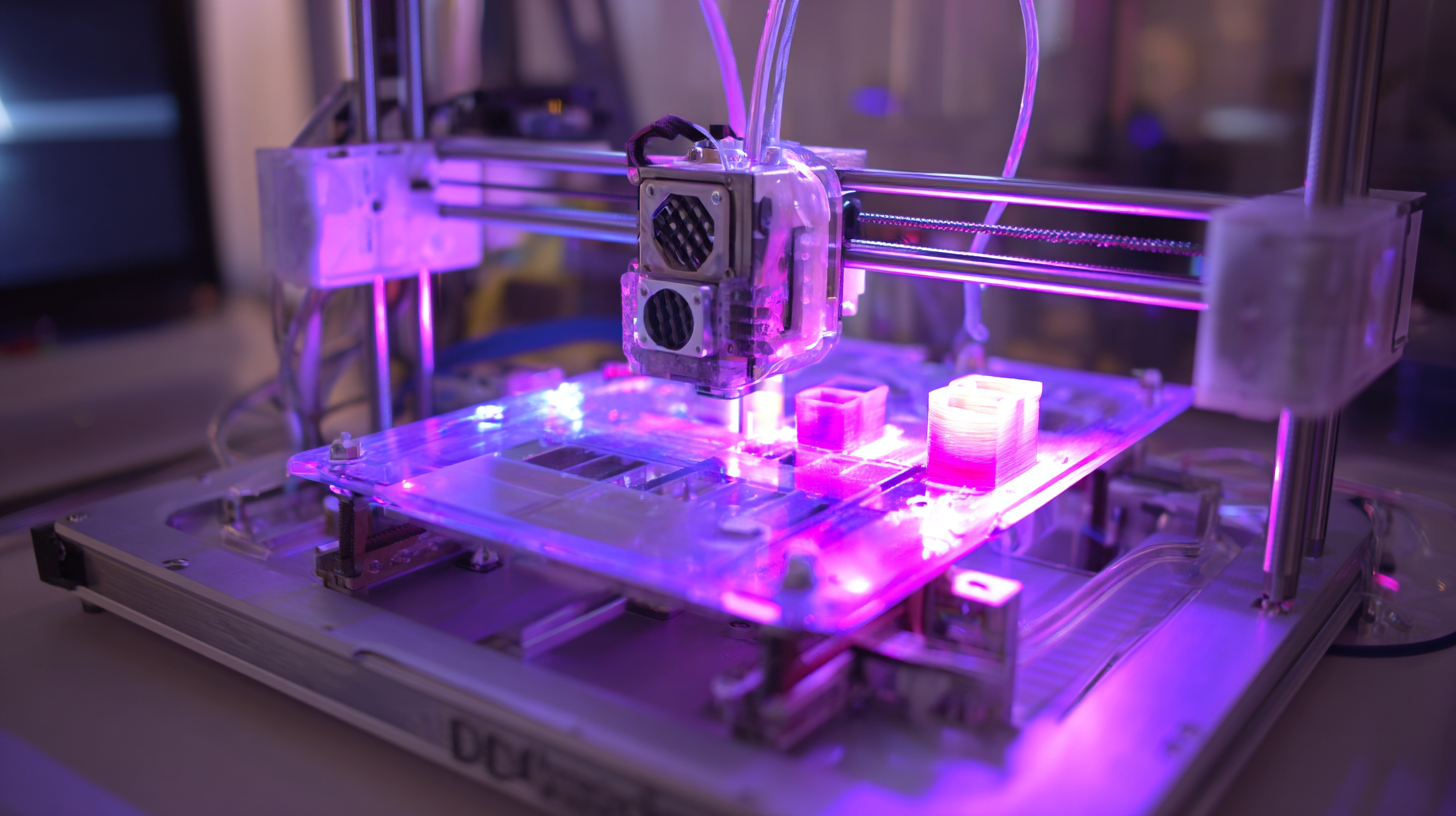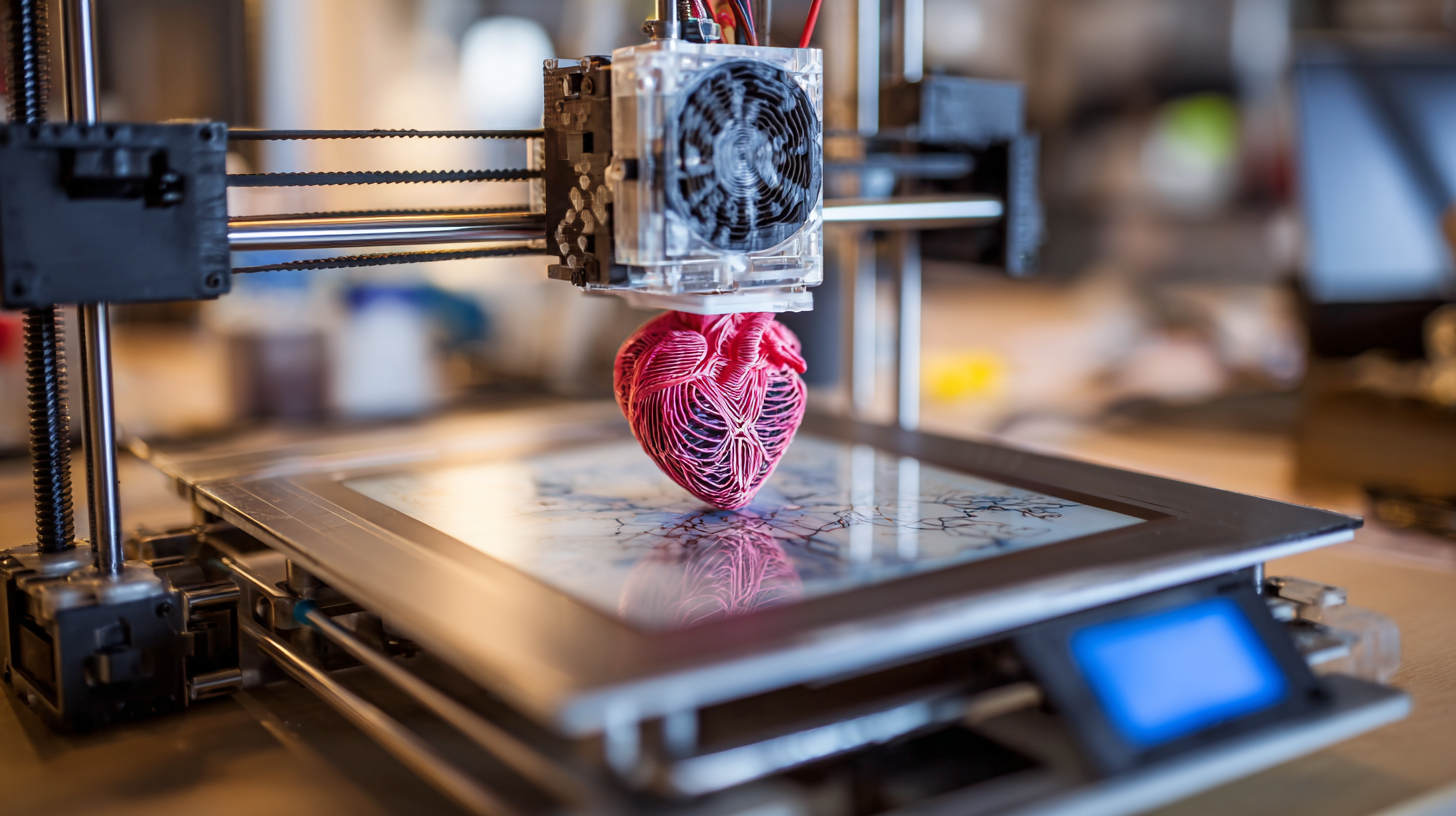The advent of 3D printer technology has ushered in a new era of innovation, transforming the way we create and interact with objects in our daily lives. According to a report by Wohlers Associates, the global 3D printing market was valued at approximately $12.6 billion in 2020, with projections indicating it could exceed $35 billion by 2024. This exponential growth highlights the significant impact of 3D printers across various industries, ranging from healthcare to manufacturing, and even in our homes.
As we explore "How to" leverage the amazing innovations of 3D printer technology, it is essential to understand its applications that are reshaping our everyday experiences. For instance, in the medical field, 3D printing is revolutionizing prosthetics and organ models, with a remarkable increase in personalized solutions for patients. Furthermore, the consumer market is witnessing a surge in 3D printer use for customized household items, significantly enhancing the DIY culture. The potential for creativity and customization is limitless, making 3D printer technology an indispensable tool in modern life.

The evolution of 3D printers has transformed them from a niche concept into essential tools in countless households around the globe. Initially developed for industrial and prototyping applications, these innovative devices have gradually expanded their reach. The technology has matured significantly since its inception in the 1980s, with advancements in materials, precision, and affordability. As a result, 3D printers are now accessible to hobbyists, educators, and professionals alike, enabling them to produce everything from simple toys to intricate medical models.
Today, 3D printers empower individuals to unleash their creativity and solve problems directly from home. Users can design and manufacture customized objects tailored to their specific needs, reducing dependency on mass-produced products. For instance, parents can print replacement parts for broken toys, artists can create unique sculptures, and inventors can quickly prototype their ideas. This democratization of manufacturing not only fosters innovation but also encourages sustainability by enabling localized production and minimizing waste. As 3D printing technology continues to advance, its potential to enhance everyday life remains vast and inspiring.
The advent of 3D printing technology has opened up a world of creative possibilities for home décor enthusiasts. With a 3D printer at your disposal, you can easily bring your design visions to life. One popular DIY project is creating custom planters that suit your aesthetic preferences. By designing unique shapes and sizes, you can add a personal touch to your indoor garden, mixing functionality with style.
Another exciting project is fabricating decorative wall art. Whether you prefer modern geometric patterns or whimsical shapes, 3D printing allows you to experiment with different materials and textures, resulting in stunning pieces that can genuinely transform a living space. Additionally, personalized items such as lampshades or table centerpieces can be customized to reflect your personality. These projects not only enhance your home environment but also provide a satisfying sense of accomplishment as you witness your creative ideas materialize right before your eyes.
This chart illustrates the percentage of various DIY 3D printing projects attempted by enthusiasts in home décor. It highlights the growing interest in customizing living spaces using innovative 3D printing technology.
The world of 3D printing has seen incredible advancements in material science, expanding the possibilities of what can be created for everyday use. Traditionally dominated by plastics, the realm of 3D printing now embraces an array of materials, including metals, ceramics, and bio-materials, leading to innovative applications across various sectors. For instance, the introduction of carbon fiber-composite filaments offers enhanced strength and durability for consumer products, making them not only lighter but also more resilient. This evolution in material science is allowing designers and engineers to think outside the box, pushing the boundaries of customization and functionality.
Moreover, recent breakthroughs in biodegradable and sustainable materials contribute significantly to environmental conservation efforts. Filaments derived from cornstarch and other organic compounds are becoming popular among eco-conscious consumers, ensuring that the printed objects can decompose without leaving harmful traces. This shift not only benefits the planet but also encourages more sustainable manufacturing processes, reducing waste and energy consumption. As these innovative materials become more accessible, 3D printing continues to revolutionize the way we create and utilize everyday items, making it an integral part of a more sustainable future.
| Innovation | Material | Application | Benefits |
|---|---|---|---|
| Biodegradable Filaments | PLA, PHA | Consumer Products, Packaging | Eco-friendly, Reduces Plastic Waste |
| Flexible Materials | TPU, TPE | Wearable Devices, Footwear | Durable, Comfortable Fit |
| Metal 3D Printing | Aluminum, Stainless Steel | Industrial Parts, Aerospace Components | High Strength, Lightweight |
| Ceramic Printing | Porcelain, Stoneware | Home Decor, Kitchenware | Aesthetic Appeal, Heat Resistance |
| Food Printing | Edible Materials | Culinary Arts, Personalization | Creativity, Customization |
The integration of 3D printing technology into the health and wellness sector has been transformative, offering innovative solutions that enhance patient care and medical practices. A recent study published in BMC Oral Health evaluates a new fitting tray method for orthodontic bonding, highlighting how 3D printing can improve the precision of bracket placement while reducing excess adhesive usage. This advancement not only benefits orthodontists but directly impacts patient comfort and overall treatment outcomes.

In addition to orthodontics, the realm of health monitoring is being revolutionized by 3D printed wearable technologies. These devices often incorporate microfluidic systems combined with machine learning to provide real-time health assessments. By enabling early detection of clinical symptoms and promoting personalized care, 3D printing is paving the way for more proactive healthcare approaches.
Tips: When considering the use of 3D printed devices for health monitoring, ensure that the products are regularly updated with the latest algorithms for accuracy. Additionally, patients should consult with healthcare professionals to understand how these innovations can best serve their individual health needs. Embracing such technology can significantly enhance the quality of health management in daily life.
 3D printing has revolutionized various aspects of everyday life, making it possible for individuals to create customized objects from the comfort of their homes. For beginners and hobbyists eager to dive into this exciting world, there are plenty of cost-effective tips to consider before starting their first projects.
3D printing has revolutionized various aspects of everyday life, making it possible for individuals to create customized objects from the comfort of their homes. For beginners and hobbyists eager to dive into this exciting world, there are plenty of cost-effective tips to consider before starting their first projects.
One of the most accessible ways to begin is to utilize free design software available online. Platforms such as Tinkercad or Fusion 360 provide intuitive interfaces that allow users to bring their ideas to life without the need for extensive training. Additionally, joining communities or forums can be incredibly beneficial. Engaging with fellow 3D printing enthusiasts not only helps in troubleshooting issues but also opens up opportunities for shared resources, such as free STL files.
When it comes to material selection, consider using PLA filament. This biodegradable option is often more affordable than others and is easier to print, making it ideal for beginners. It's essential to ensure you have a suitable printer configuration to maximize the quality of your prints. By investing time in calibrating your printer and experimenting with different settings, you can achieve impressive results without breaking the bank.
